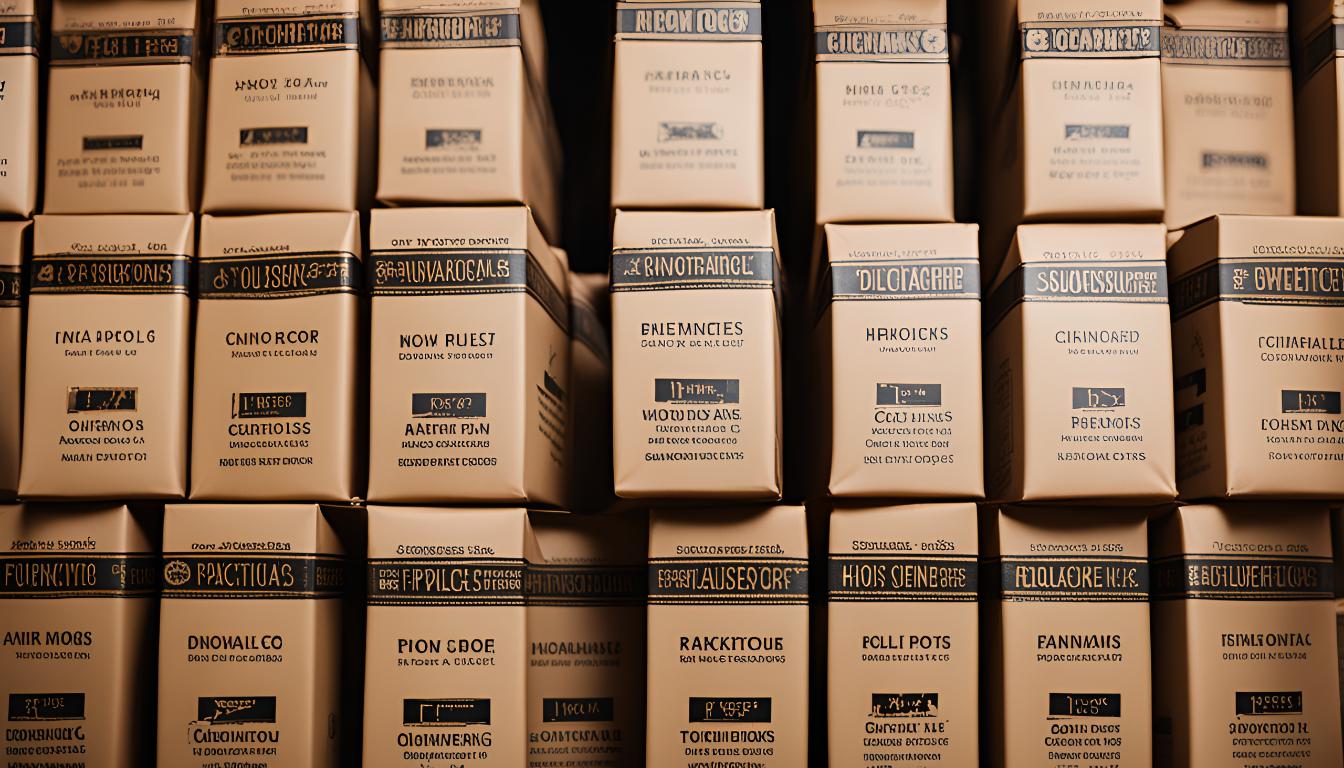25/02/2025
Image Processing and Blockchain-Based Product Traceability Systems
Today, we are all witnessing how rapidly technology is advancing. Product traceability has become a vital concern for both consumers and manufacturers. The combination of image processing and blockchain technologies holds the potential to revolutionize this field. In this article, we will examine in detail how these two advanced technologies contribute to product traceability. From the core principles and applications of image processing technology to the advantages of secure data storage with blockchain, and from the results to future strategies, we will cover all aspects. By doing so, we will explore how these technologies, aimed at enhancing security and transparency in industrial processes, can be integrated into the business world.

Impact of Image Processing and Blockchain on Product Traceability
As the complexity of global supply chains increases, ensuring product traceability and data security becomes essential. In this context, image processing and blockchain technologies offer revolutionary solutions. Image processing enables the digital recognition, classification, and tracking of products. On the other hand, blockchain technology guarantees transaction security and transparency, supporting reliable data flow across all layers of the process.
Image Processing and Blockchain Integration
Image processing allows the unique identification of each product by detecting serial numbers, labels, or specific markings on packaging. This provides the ability to track the journey of a product from its origin to the consumer. This process is especially crucial in sensitive sectors such as food safety and pharmaceutical tracking.
When integrated with blockchain, the data collected by image processing is transferred to the blockchain. This integration ensures that each data block is immutable and accessible only to authorized individuals. As a result, data security is enhanced, and trust in the system is increased. Furthermore, due to the transparency feature of blockchain, any fraud or irregularity that might arise throughout the supply chain can be easily detected and prevented.
This combination of technologies marks significant progress in the field of product traceability. The detailed product information obtained through image processing, strengthened by blockchain technology, is made accessible to all stakeholders. This creates a high level of transparency for both supply chain managers and end consumers.
Role of Image Processing and Blockchain Technologies in Product Traceability
Image processing and blockchain technologies play a groundbreaking role in making modern supply chains more secure and manageable, revolutionizing product traceability. This provides a secure and transparent trading environment for both manufacturers and consumers.
Basic Principles and Applications of Image Processing Technology
Image processing refers to the process of applying various operations and analysis on digital images. This technology is used to enhance image quality or extract specific information through numerical and optical adjustments. Image processing applications are widely used in fields ranging from healthcare to security systems.
The basic principles involve performing mathematical operations on the pixels that make up the image, changing their values to obtain a new image. For instance, image sharpening, noise reduction, and color correction are among the most commonly used methods.
The integration of image processing technology with blockchain for product traceability holds great potential in verifying the source of products and preventing counterfeiting. Image processing helps ensure transparency and data security in the authentication of products, helping consumers feel safe.
Particularly, this technology is thought to play a crucial role in detecting counterfeit products by analyzing visuals on packaging and product labels. Additionally, when combined with blockchain technology, a secure digital record system can be established to track products throughout the entire supply chain.
The strategic use of image processing technology in this way offers innovative and effective solutions for inter-industry advancements. This provides a clear advantage, especially in cases where evolving consumer expectations and technological advancements converge.
Secure Data Storage with Blockchain: Image Processing Potential
Blockchain technology is considered a revolutionary innovation in terms of data storage and transparency. This technology provides a secure data storage environment by recording all transaction history in an immutable way. This feature makes product traceability systems more reliable and transparent.
In the field of product traceability, while image processing is used to track and verify products, blockchain integration further secures this process. Image processing allows real-time tracking and classification of products, while blockchain ensures that this information is protected from any external interference.
The data obtained through image processing can be encrypted and stored on the blockchain. This way, crucial information such as the product's history, status, and ownership at each point in the supply chain is secured. This process not only ensures data security but also provides consumers with transparent information about the entire journey of the product.
Results and Future Strategies
With advancing technologies, image processing and blockchain systems hold significant potential in the field of product traceability. The integration of these technologies enables a wide range of applications across industries, particularly in terms of transparency and data security. It is expected that in the coming years, this integration will be further developed and become a standard practice in various sectors.
In the future, the effective use of technology aims to make product traceability systems more accurate and faster. In this context, the advanced use of image processing technology and the strengthening of blockchain infrastructure should be prioritized.
Strategically, considering the potential of these technologies to enhance trust between businesses and consumers, investments should be increased, and research and development activities in these areas should be supported. Additionally, regulations and standards should be aligned with these new technological developments to ensure the seamless and efficient operation of the system.
Frequently Asked Questions
What is image processing technology?
Image processing technology refers to the operations applied
to digital images. These operations include enhancing, manipulating, or interpreting images. These processes,
performed using various algorithms and statistical methods, are widely used in image analysis and automation
systems.
What is blockchain technology and how can it be used for product traceability?
Blockchain is a
distributed ledger technology that allows data to be stored in a way that is transparent and immutable. When used
for product traceability, it securely, transparently, and immutably records every stage of a product’s journey. This
enables easy tracking and verification of the processes the product goes through along the supply chain.
How can image processing and blockchain technologies be integrated?
Image processing can be used
for the automatic recognition and classification of products. When combined with blockchain, the data obtained can
be securely stored and recorded on the blockchain. This integration ensures that product verification and
traceability are carried out more reliably and efficiently.
What benefits do these technologies provide for product security?
These technologies offer
significant advantages in preventing counterfeiting and facilitating product recalls. Since every step of a
product’s journey is transparently recorded, consumer security is enhanced, and brand reliability is reinforced.
Additionally, in cases of product fraud, responsible parties can be quickly identified.
What challenges do blockchain-based traceability systems face?
The implementation of blockchain
technology may require high initial investment costs. Additionally, technical challenges may arise in scaling and
integrating the systems. Issues such as data privacy and processing capacity can also hinder the widespread adoption
of these systems.
What innovations can be expected in traceability systems with the development of image processing
technology?
Advancements in image processing technology may bring faster and more accurate product
recognition and classification capabilities. This will allow traceability systems to operate more effectively and
quickly. Particularly, the integration of artificial intelligence and machine learning can further enhance these
processes.

